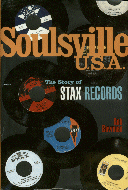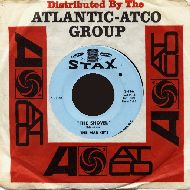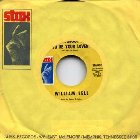
STORY
INDEX -- NEWS -- INFOS -- STAX TODAY -- FOCUS -- ADS -- LISTS -- LINKS -- PHOTOS -- CONTACT

STORY
____________________________________________
ESSENTIAL READINGS ABOUT STAX
Rob Bowman
Soulsville, U.S.A. : The Story of Stax Records

Hardcover, 450 pages
Published by MacMillan General Reference
Publication date: November 1, 1997
Order at www.amazon.com
Grammy Award-winning historian Rob Bowman discloses the behind-the-scenes deals and business transactions that contributed to the rise and fall of Stax Records--the greatest R&B label ever. Readers will walk the halls of the famous studio that produced hits for the likes of Otis Redding, Booker T. and the MGs, and many others. 40 photos.
Peter Guralnick
Sweet Soul Music

438 pages
First published in 1986 by Harper and Row
Order at www.amazon.com
This is the best history of the whole sixties Soul Music... as important for what it says about America, class and race issues, and the sixties as for its outstanding musical insights. A great part of the book is dedicated to Stax and Atlantic records with numerous and rare photos.
____________________________________________
THE
STAX STORY
by
Robert Palmer
1978
Stax Records, a name which is synonymous with Southern soul music, began as Satellite Records in Memphis in 1959. Founded by Jim Stewart, a former country fiddler, and Estelle Axton, whose son Charles "Packy" Axton was a saxophonist with the original Mar-Keys, the company had its first Top Ten hit in 1961 with "Gee Whiz" by Carla Thomas (below right with William Bell and Johnny Taylor). During the next few years Stax developed a brand of music which was to have worldwide repercussions. With its house rhythm section, better known as Booker T. & the MGs, its tight horn section, which later became the Memphis Horns, and its gospel-rooted recording artists--Otis Redding, Sam and Dave--Stax virtually created contemporary soul music, both on its own records and as a Southern base of operations for Atlantic artists such as Don Covay and Wilson Pickett.
The death of Otis Redding in 1967, following a triumphant European tour and a virtually cataclysmic appearance at the Monterey Pop Festival, signaled the end of the first Stax era. Sam and Dave disbanded around the same time, and although they continued to record as a unit, the members of Booker T. & the MGs did more administrative work than session playing. It was left to a new generation of artists and producers to carry on the Stax legacy, and the company did not find itself wanting in either department.
The most innovative and successful of the new breed of Stax artists was Isaac Hayes (left with David Porter), who had been an important songwriter, producer, and session pianist during the company's earlier period; with David Porter, he was responsible for writing and producing Sam and Dave's "Hold On, I'm Coming" and "Soul Man." On his own, Hayes developed a unique blend, part jazz, part soul, part easy listening. He talked on his records in a mellow, bantering manner, and he used an orchestra to provide instrumental cushioning. In many ways Hayes was a founding father of the sweet soul of the 1970s.
But Stax's roster ran the gamut of black popular music. Albert King did his own funky thing, playing his flying-V guitar with bluesy urgency. The Staple Singers were at their artistic peak when they recorded for Stax during the late 1960s and early 1970s, turning out records that blended a utopian social vision with rhythmic excitement. The great Johnnie Taylor was in his prime, testifying on the ins and outs of falling in and out of love with intense passion. Then there were the groups--the Soul Children, who said what was on their minds and attracted a fanatical following in England as well as a large black following in the States, and the smoother but still gritty Emotions. The music behind these singers was more varied than in the early days, and some of it was recorded outside Memphis. But the spirit of Stax was burning as brightly as ever.
The new Stax producers were at least as important as the artists in determining the Stax sound. One of the most resourceful and versatile was Don Davis, who began a fruitful association with Johnnie Taylor which still continues. Al Jackson, Jr. the great soul drummer who was the backbone of Booker T. & the MGs, became a canny, astute producer, working, often in collaboration with Jim Stewart or other company personnel, with Albert King, the Staple Singers, and the Emotions. Jackson was still heard on drums on many Stax releases; other session musicians included guitarists Vernon Burch, now a recording artist in his own right, and Michael Toles, and keyboard player Marvell Thomas. Al Bell was an important creative force as well as an administrator.
The thing that made Stax go was teamwork. When you visited the studio, which was a converted movie theater on East McLemore, you could feel it. The carpeted halls were always full of groups of people, who seemed to be going to and fro at will, dropping in on friends in their offices, heading down to Studio A to check on the progress of a mixing session, or out to the parking lot where Isaac Hayes's Rolls-Royce sat glittering in the sun. The cooperation between white and black musicians and producers was practically unprecedented; it was one of the secrets of the company's across-the-board success. But it would never have worked without that spirit, and although the spirit was beset by the blows of circumstance, it was in the music until the end, when Stax was adjudicated a bankrupt, in 1975.
But by June 1977, virtually all Stax assets, including all masters, both completed and unfinished recordings, together with all Stax contracts, were purchased by a group which then licensed Fantasy Records to handle all Stax product.
____________________________________________
WHERE TO FIND MOST STAX RECORDS


Pre 68 on Rhino and Rhino Digital: www.rhino.com
Pre and post may 68 issued and unissued on CD: www.concordmusicgroup.com
Second hand vinyl records on www.ebay.com, www.dustygrooves.com and www.shangri.com .
See also www.cdnow.com, www.cduniverse.com and www.amazon.com among others.
Look also at all the INFOS pages on this site or go to your favorite record dealer.
INDEX -- NEWS -- INFOS -- STAX TODAY -- FOCUS -- ADS -- LISTS -- LINKS -- PHOTOS -- CONTACT